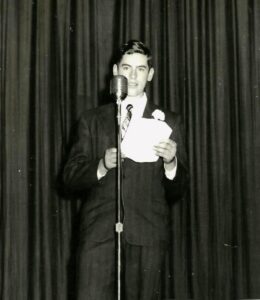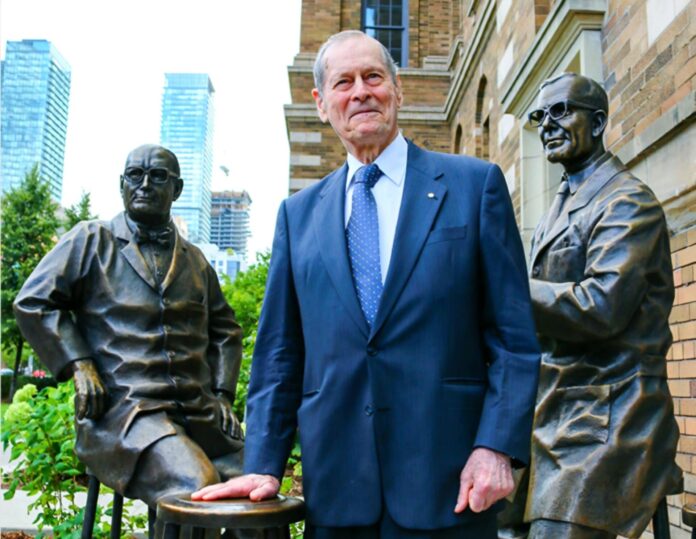He’s a scientist, biophysicist, researcher, and teacher. Born in Lloydminster in 1931, he has received the Order of Canada and the Order of Ontario, among several other accolades. There are identical statues of him in Vancouver and Toronto. He is on a Canada stamp, but no similar salute exists in the place where he was born.
Dr. James Till and his research partner Dr. Ernest McCulloch led pioneering stem cell work in the 1960s and 1970s, which demonstrated the existence of stem cells. That work underpinned future research and developments, such as harvesting stem cells and bone marrow transplants.
In 2005, the duo won the Lasker Award, the North American Nobel Prize equivalent.
Till did his early schooling in Lloydminster public and high schools. In sports, he said he did quite well in track and field. He played team sports like softball and soccer. In field events in which bigger athletes usually dominate, he felt he “utilized superior technique” allowing him to bring back good returns in discus and shot put.
“My best showing in school sports was at an event for Northern Saskatchewan high school students, held in North Battleford. My technique (and some luck) allowed me to set a new record for the discus throw,” says Till.
He enjoyed tennis in the summer and curling in the winter and continued curling into his 80s.
Till was born into an agricultural family. The home farm was located about two miles north of Lloydminster with its southern boundary now to the north of the Glenn E. Neilsen Industrial Park. His father who came from England had to end his schooling at the equivalent of grade 8 due to the passing of his father.
He says his parents “greatly valued education, and that served as a crucial initial source of motivation” for his future career path.
“The obvious connection is the education that I received in Lloydminster. It launched me into a subsequent career in research,” says Till. He adds his father educated himself by reading so this gave him the appreciation of making sure his kids were well-educated.
His mother was also forced to go to work without completing high school in Lloydminster.
“She had 11 siblings, and she, as one of the older children, needed to be able to support herself as soon as possible. When she, at age 15, was able to qualify as a teacher, she became self-supporting. However, she very much wanted to complete her high school education and did so by correspondence when I was a youngster. Hence her appreciation of an education,” says Till.
He says, “Without my parents’ appreciation of an education, I might have decided to give the family farm the highest priority, especially when it seemed that my brother Bill, 4 ½ years older than myself, might not return to help my father on the farm.”
It was his brother Bill, who attended the U of S College of Agriculture and gave Jim “a positive impression of the U of S.”

Till continued: “I had no comparable talent in physics, but specialized in it as an undergraduate at the U of S because I thought it was challenging, and, if I could handle it, I could probably handle anything else of interest. That’s what happened.”
Reflecting on how a youngster from rural Canada would go on to be a world-class scientist Till says, “Another crucial source of motivation was scholarships, beginning with an entrance scholarship awarded to me by the University of Saskatchewan. As time went on, I continued to win scholarships, so I continued my education until I had completed postdoctoral studies. I began to accumulate experience in research as a summer student at the U of S. I enjoyed the experience.”
In 1961, James Till and co-discoverer Ernest McCulloch were studying the effects of radiation on bone marrow tissue in lab mice when they made the discovery that eventually led them to what they would call in later years, stem cells.
In 2005, in the journal Nature Medicine, the researchers said their work on stem cells shows the value of basic science.
“We weren’t deliberately seeking such cells, but, thanks to a felicitous observation originally made by McCulloch, we did stumble upon them. Our experience provides yet another case study of both the value of fundamental research and the importance of serendipity in scientific research.”
When asked about how he would like to be remembered, Till feels a “named entrance scholarship for Lloydminster students who are the first in their family to attend a university would be a good way. However, that requires a large endowment.”
Editor’s note: The writer of this story donated their stem cells to a patient in 2011.



